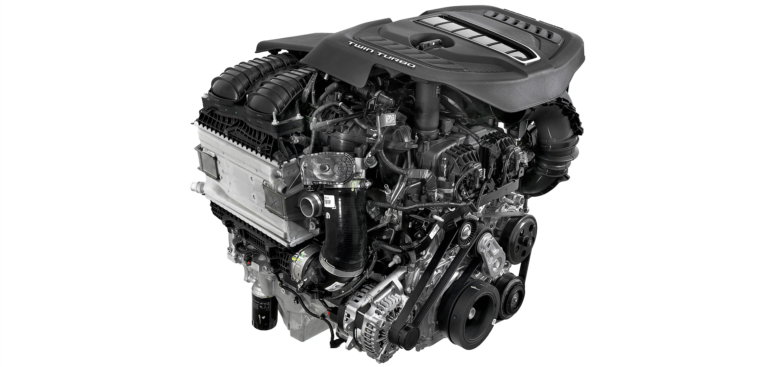Stellantis has released details of its latest twin-turbocharged, 3.0-liter, inline six-cylinder engine for the US market. Dubbed the Hurricane, it is pitched as a downsized alternative to naturally aspirated V8s. The engine will be available in two variants, a Standard Output (SO) and High Output (HO), producing in excess of 400hp and 500hp respectively.
“As Stellantis aims to become the US leader in electrification, with a 50% battery-electric vehicle (BEV) sales mix by 2030, internal combustion engines will play a key role in our portfolio for years to come and we owe it to our customers and the environment to provide the cleanest, most efficient propulsion possible,” said Micky Bly, Stellantis head of propulsion systems. “The Hurricane twin-turbo is a no-compromise engine that delivers better fuel economy and an important reduction in greenhouse gases without asking our customers to give up performance.”
Sharing much of its architecture with the company’s global i4, 2.0-liter engine, including the bore diameter and spacing as well as stroke, the foundation of the Hurricane is a deep-skirt cast-aluminum block with a structural aluminum alloy oil pan. Cross-bolted steel main bearing caps contain the rotating assembly, consisting of forged steel crankshaft and connecting rods. In the HO version, these drive lightweight, oil-jet-cooled, forged-aluminum pistons with an anodized top ring land and a diamond-like coating (DLC) on the pins to minimize friction. Cast pistons are used in the SO variant. The SO has a compression ratio of 10.4:1 while the HO runs at 9.5:1.
Notably, Stellantis states that during manufacture, the block is deck-plate honed to optimize tolerances once assembled. The bores are also plasma transfer wire arc (PTWA) coated. The company notes that using this approach, rather than cast-iron liners, leaves more aluminum between the cylinders, allowing for better heat transfer.
Fueling is dealt with by a 350 bar direct-injection system; the twin turbochargers are capable of delivering 1.5 bar of boost in the SO version and 1.8 bar in the HO. The incoming charge air is cooled via an integrated air-water charge cooler, and the exhaust manifolds are also water cooled. Considerable attention has been paid to reducing parasitic losses, for example, using a continuously variable displacement oil pump and a ball-valve thermostat.
Stellantis states that the first Hurricane-powered vehicles will roll off the line later in 2022, with the engines produced at its Saltillo Engine Plant in Mexico.


